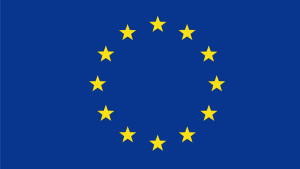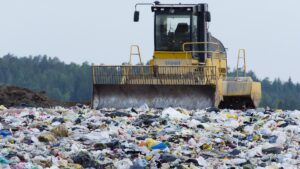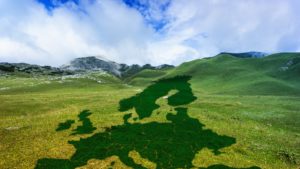Politics
Zero Waste Europe comments on Parliament’s opinion report on the EU Methane report

in that regard, acknowledges the potential of anaerobic digestion from bio-degradable waste which allows the production of bio-methane; stresses, in line with the waste hierarchy, that incineration is only at the second lowest step in the waste hierarchy and recalls its positions on incineration set out in its resolution of 10 February 2021 on the New Circular Economy Action Plan”.
We are happy with the outcome of the vote today in the ENVI committee as the report adopted now calls for the alignment of the Landfill Directive with the Circular Economy Acton Plan. It calls on the Commission to focus the future revision of the relevant waste directives on proposing target to cap the generation of residual waste, and also by improving the Landfill Directive to change the current 10% landfill minimisation target from a percentage (%)-based target to a weight (kgs)-based one. Moreover, the committee added an extra by calling for no provision of EU funding for incineration, and recalled its positions on incineration set out in its position on the New Circular Economy Action Plan”.
ESWET: High time to tackle methane emissions from waste

ESWET – the European Suppliers of Waste-to-Energy technology welcomes the European Parliament ENVI Committee’s report underlining the need for bold action against methane emissions in the waste sector.
Methane is a powerful greenhouse gas (GHG): 84-times-more-potent than CO2 over a 20-year period. However, unlike CO2 and other GHGs, methane emissions – which represent 11% of the total GHG emissions in the EU – are not regulated properly in the European Union. Today’s report makes clear that that this will change.
In the last months, international organisations have raised alarms about the impact of methane on the environment; the recent IPCC report released in July 2021 warned that robust, rapid and sustained reductions in methane emissions are needed to keep global warming in check.
Earlier in 2021, the UNEP Global Methane Assessment identified the waste sector as having the most significant mitigation potential for reducing methane emissions in Europe. This means that addressing landfills is key.
As a last-resort option in the waste hierarchy, landfills are the most polluting way to manage waste, both in terms of GHG emissions and other risk of pollution to air, soil and groundwater. However, landfills remain the primary waste management option in several EU member states. In 2019, more than 20% of municipal solid waste was still landfilled in Europe.
“Today, the parliamentary report demonstrated that the European Parliament is taking the methane issue seriously. – said Patrick Clerens, ESWET’s Secretary-General – Acknowledging Waste-to-Energy’s role in diverting non-recyclable waste from landfills and reducing methane emissions in the waste sector, while recovering energy and recycling metals and other aggregates, would be a further step in the right direction”.
By 2035, no more than 10% of municipal waste should go to landfills in the EU. To achieve this challenging European target, clear support is needed for an integrated waste management system. It involves priority investments in waste prevention, reuse, recycling, but also in energy recovery and material recycling from residual waste, which is essential in the safe treatment of the waste that cannot be recycled as is.
Delays in ecodesign threaten EU climate targets and cost citizens billions
The European Commission is dragging its feet in the development of ecodesign and energy labelling rules for products, mainly due to a lack of resources as these policies are not given the prominence and resources they deserve.
Ecodesign and energy labelling policies alone are expected to deliver about one-third of the savings needed to achieve the EU’s 2030 55% emission reduction target.
However, only 25% of updates foreseen for the 2016-2019 period have been implemented to date. In parallel, the Commission is still developing its Working Plan for 2020-2024, which is expected to be adopted with at least a 2-year delay.
Delays in developing ecodesign and energy labelling policies are estimated to cause 10 million tonnes (CO2eq) of additional emissions every year by 2030, according to new analysis by ECOS and the European Environmental Bureau (EEB) for the Coolproducts campaign. This is equivalent to 5 million cars added to our roads.
Without delays, consumers could save a total of 40 billion euros on their energy bills between 2020 and 2030. As it is, however, an average European household will now spend an extra 110€ on energy by 2030 as a direct result of poor policymaking.
The current situation raises concerns over the Commission’s allocation of resources to essential climate and product policies.
Resource shortages clash with the high relevance that ecodesign and energy labelling policies are set to represent in the much-anticipated Sustainable Products Initiative, a flagship file currently under development by the Commission.
To make up for the time already lost and harvest the potential additional savings, environmental organisations call on the Commission to allocate adequate staff numbers and political urgency to crucial ecodesign and energy labelling policies, switching towards a much more ambitious implementation of the existing regulations.
Delays in ecodesign threaten EU climate targets and cost citizens billions
The European Commission is dragging its feet in the development of ecodesign and energy labelling rules for products, mainly due to a lack of resources as these policies are not given the prominence and resources they deserve.
Ecodesign and energy labelling policies alone are expected to deliver about one-third of the savings needed to achieve the EU’s 2030 55% emission reduction target.
However, only 25% of updates foreseen for the 2016-2019 period have been implemented to date. In parallel, the Commission is still developing its Working Plan for 2020-2024, which is expected to be adopted with at least a 2-year delay.
Delays in developing ecodesign and energy labelling policies are estimated to cause 10 million tonnes (CO2eq) of additional emissions every year by 2030, according to new analysis by ECOS and the European Environmental Bureau (EEB) for the Coolproducts campaign. This is equivalent to 5 million cars added to our roads.
Without delays, consumers could save a total of 40 billion euros on their energy bills between 2020 and 2030. As it is, however, an average European household will now spend an extra 110€ on energy by 2030 as a direct result of poor policymaking.
The current situation raises concerns over the Commission’s allocation of resources to essential climate and product policies.
Resource shortages clash with the high relevance that ecodesign and energy labelling policies are set to represent in the much-anticipated Sustainable Products Initiative, a flagship file currently under development by the Commission.
To make up for the time already lost and harvest the potential additional savings, environmental organisations call on the Commission to allocate adequate staff numbers and political urgency to crucial ecodesign and energy labelling policies, switching towards a much more ambitious implementation of the existing regulations.
EuRIC welcomes European plastics producers’ call
As consistently stressed by EuRIC, European recyclers strongly support mandatory and quantitative recycled content targets for packaging production as an efficient policy instrument to steer the demand for high-quality recycled materials and invest throughout the packaging value chain – from design to end-of-life collection and recycling.
For Paul Mayhew, President of EuRIC Plastics Recycling Branch, “this call made from the voice of plastics manufacturers is a major step forward towards more circularity in the field of packaging and a recognition that binding recycled content targets in EU legislation are a powerful market signal to scale-up circular value chains. It has proved to be an extremely efficient tool for beverage bottles in pulling the demand for food-grade rPET and de-correlating prices from the ever-fluctuating oil market. Extending such an obligation to plastic packaging at large will give the long-term certainty the packaging value chain needs to scale-up and be in a position to supply high-quality recycled polymers”, he added.
With substantial room to improve the uptake of raw materials from recycling (RMR) in a number of plastic packaging types, the recycling industry looks forward cooperating with the plastics industry to meet such a target by 2030.
Emmanuel Katrakis, Secretary General of EuRIC, stressed that “transitioning towards a circular economy is key to achieve climate-neutrality. Binding recycled content targets for plastics and other materials will play a key role in achieving that goal. On top of push-and-pull measures, a comprehensive policy framework that gives an edge to circular value chains in the EU and globally is absolutely essential”, he concluded.
EuRIC welcomes European plastics producers’ call
As consistently stressed by EuRIC, European recyclers strongly support mandatory and quantitative recycled content targets for packaging production as an efficient policy instrument to steer the demand for high-quality recycled materials and invest throughout the packaging value chain – from design to end-of-life collection and recycling.
For Paul Mayhew, President of EuRIC Plastics Recycling Branch, “this call made from the voice of plastics manufacturers is a major step forward towards more circularity in the field of packaging and a recognition that binding recycled content targets in EU legislation are a powerful market signal to scale-up circular value chains. It has proved to be an extremely efficient tool for beverage bottles in pulling the demand for food-grade rPET and de-correlating prices from the ever-fluctuating oil market. Extending such an obligation to plastic packaging at large will give the long-term certainty the packaging value chain needs to scale-up and be in a position to supply high-quality recycled polymers”, he added.
With substantial room to improve the uptake of raw materials from recycling (RMR) in a number of plastic packaging types, the recycling industry looks forward cooperating with the plastics industry to meet such a target by 2030.
Emmanuel Katrakis, Secretary General of EuRIC, stressed that “transitioning towards a circular economy is key to achieve climate-neutrality. Binding recycled content targets for plastics and other materials will play a key role in achieving that goal. On top of push-and-pull measures, a comprehensive policy framework that gives an edge to circular value chains in the EU and globally is absolutely essential”, he concluded.
EuRIC welcomes European plastics producers’ call
As consistently stressed by EuRIC, European recyclers strongly support mandatory and quantitative recycled content targets for packaging production as an efficient policy instrument to steer the demand for high-quality recycled materials and invest throughout the packaging value chain – from design to end-of-life collection and recycling.
For Paul Mayhew, President of EuRIC Plastics Recycling Branch, “this call made from the voice of plastics manufacturers is a major step forward towards more circularity in the field of packaging and a recognition that binding recycled content targets in EU legislation are a powerful market signal to scale-up circular value chains. It has proved to be an extremely efficient tool for beverage bottles in pulling the demand for food-grade rPET and de-correlating prices from the ever-fluctuating oil market. Extending such an obligation to plastic packaging at large will give the long-term certainty the packaging value chain needs to scale-up and be in a position to supply high-quality recycled polymers”, he added.
With substantial room to improve the uptake of raw materials from recycling (RMR) in a number of plastic packaging types, the recycling industry looks forward cooperating with the plastics industry to meet such a target by 2030.
Emmanuel Katrakis, Secretary General of EuRIC, stressed that “transitioning towards a circular economy is key to achieve climate-neutrality. Binding recycled content targets for plastics and other materials will play a key role in achieving that goal. On top of push-and-pull measures, a comprehensive policy framework that gives an edge to circular value chains in the EU and globally is absolutely essential”, he concluded.
Better raw material sourcing to reduce GHG emissions

According to a European Environment Agency (EEA) report, focusing on raw material extraction and processing, raw material consumers can use their purchasing power to influence suppliers to become more climate friendly. At European Union (EU) level, policy options such as including sourcing requirements in public procurement and provisions in trade agreements could help the EU cut emissions both within its territory and also contribute to global reductions.
The way we source and process raw materials for our economy matters for the environment, particularly when one looks at emissions of greenhouse gases. In the EU, non-energy and non-agricultural raw materials form a small part of all consumed natural resources. Nevertheless, their extraction and processing alone account for an estimated 18 % of the EU’s total consumption-based greenhouse gas emissions. According to the EEA report ‘Improving the climate impact of raw material sourcing’, better sourcing practices could potentially cut emissions by at least 10 %, and in many cases much more.
The EEA report assesses the potential to reduce greenhouse gas emissions from the extraction and processing of key raw materials consumed in Europe. The selected eight raw materials include copper, iron, gold, limestone and gypsum, bauxite and aluminium, timber, chemical and fertiliser minerals, and salt.
Examples of climate-friendly sourcing options include adopting a life cycle approach to allow better accounting and monitoring of climate-related impacts associated with raw material supply chains, promoting resource- and energy-efficient practices, promoting use of renewable energy sources during extraction and processing of raw materials, strengthening market demand for secondary raw materials and using international frameworks for increasing transparency and cooperation along the raw material supply chains.
According to the EEA report, end-users’ requirements for climate-friendly sourcing practices should also primarily focus on the raw material processing stage, which has greater potential for emission reductions than the extraction or trade stages. Encouraging the use of public procurement requirements and provisions in international trade agreements are among the ways to increase the effectiveness of climate-friendly sourcing measures globally, the report notes.
Better raw material sourcing to reduce GHG emissions

According to a European Environment Agency (EEA) report, focusing on raw material extraction and processing, raw material consumers can use their purchasing power to influence suppliers to become more climate friendly. At European Union (EU) level, policy options such as including sourcing requirements in public procurement and provisions in trade agreements could help the EU cut emissions both within its territory and also contribute to global reductions.
The way we source and process raw materials for our economy matters for the environment, particularly when one looks at emissions of greenhouse gases. In the EU, non-energy and non-agricultural raw materials form a small part of all consumed natural resources. Nevertheless, their extraction and processing alone account for an estimated 18 % of the EU’s total consumption-based greenhouse gas emissions. According to the EEA report ‘Improving the climate impact of raw material sourcing’, better sourcing practices could potentially cut emissions by at least 10 %, and in many cases much more.
The EEA report assesses the potential to reduce greenhouse gas emissions from the extraction and processing of key raw materials consumed in Europe. The selected eight raw materials include copper, iron, gold, limestone and gypsum, bauxite and aluminium, timber, chemical and fertiliser minerals, and salt.
Examples of climate-friendly sourcing options include adopting a life cycle approach to allow better accounting and monitoring of climate-related impacts associated with raw material supply chains, promoting resource- and energy-efficient practices, promoting use of renewable energy sources during extraction and processing of raw materials, strengthening market demand for secondary raw materials and using international frameworks for increasing transparency and cooperation along the raw material supply chains.
According to the EEA report, end-users’ requirements for climate-friendly sourcing practices should also primarily focus on the raw material processing stage, which has greater potential for emission reductions than the extraction or trade stages. Encouraging the use of public procurement requirements and provisions in international trade agreements are among the ways to increase the effectiveness of climate-friendly sourcing measures globally, the report notes.
Better raw material sourcing to reduce GHG emissions

According to a European Environment Agency (EEA) report, focusing on raw material extraction and processing, raw material consumers can use their purchasing power to influence suppliers to become more climate friendly. At European Union (EU) level, policy options such as including sourcing requirements in public procurement and provisions in trade agreements could help the EU cut emissions both within its territory and also contribute to global reductions.
The way we source and process raw materials for our economy matters for the environment, particularly when one looks at emissions of greenhouse gases. In the EU, non-energy and non-agricultural raw materials form a small part of all consumed natural resources. Nevertheless, their extraction and processing alone account for an estimated 18 % of the EU’s total consumption-based greenhouse gas emissions. According to the EEA report ‘Improving the climate impact of raw material sourcing’, better sourcing practices could potentially cut emissions by at least 10 %, and in many cases much more.
The EEA report assesses the potential to reduce greenhouse gas emissions from the extraction and processing of key raw materials consumed in Europe. The selected eight raw materials include copper, iron, gold, limestone and gypsum, bauxite and aluminium, timber, chemical and fertiliser minerals, and salt.
Examples of climate-friendly sourcing options include adopting a life cycle approach to allow better accounting and monitoring of climate-related impacts associated with raw material supply chains, promoting resource- and energy-efficient practices, promoting use of renewable energy sources during extraction and processing of raw materials, strengthening market demand for secondary raw materials and using international frameworks for increasing transparency and cooperation along the raw material supply chains.
According to the EEA report, end-users’ requirements for climate-friendly sourcing practices should also primarily focus on the raw material processing stage, which has greater potential for emission reductions than the extraction or trade stages. Encouraging the use of public procurement requirements and provisions in international trade agreements are among the ways to increase the effectiveness of climate-friendly sourcing measures globally, the report notes.